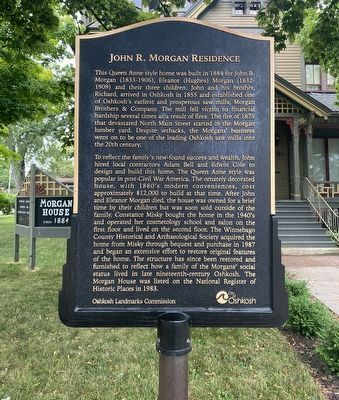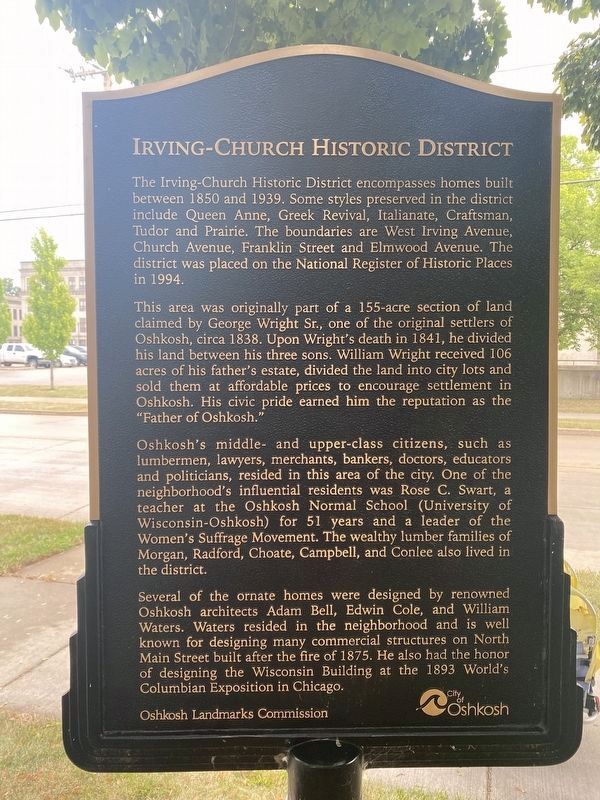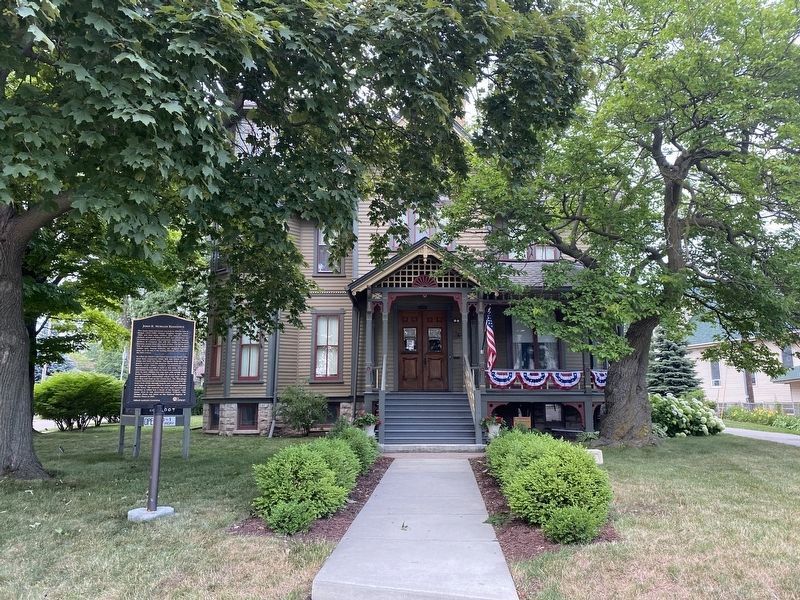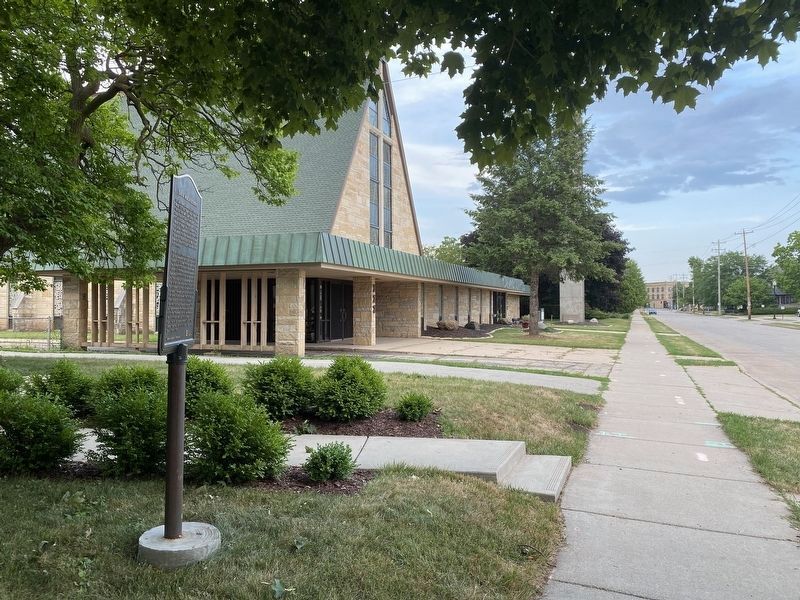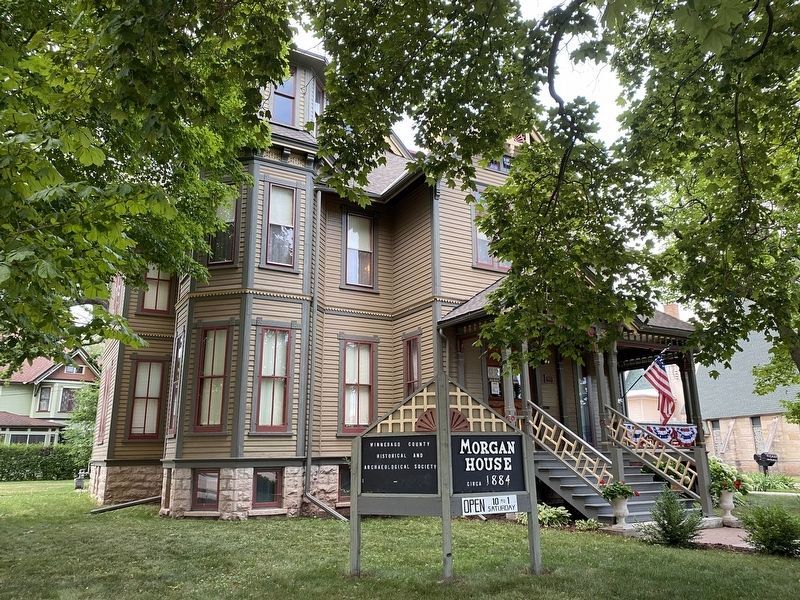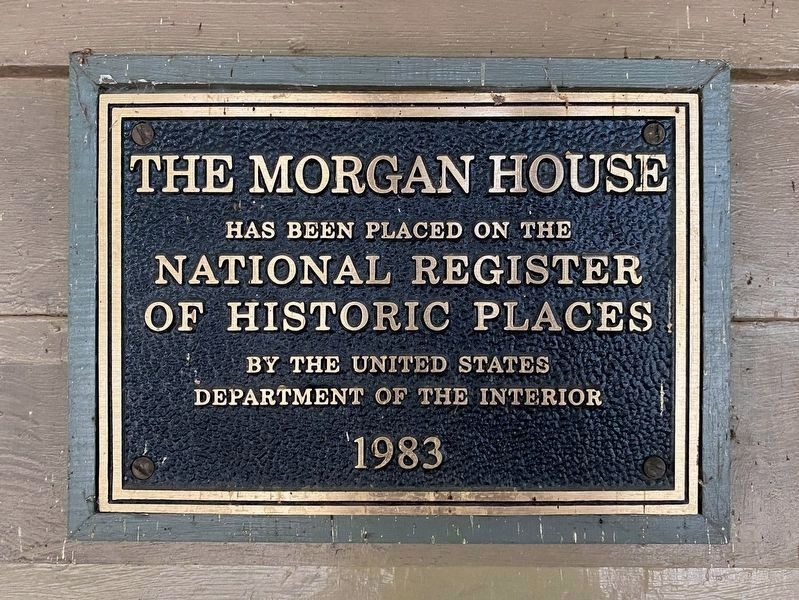John R. Morgan Residence / Irving-Church Historic District
[Side 1]
This Queen Anne style home was built in 1884 for John R. Morgan (1833-1906) Eleanor (Hughes) Morgan (1832- 1909) and their three children. John and his brother, Richard, arrived in Oshkosh in 1855 and established one of Oshkosh’s earliest and prosperous saw mills, Morgan Brothers & Company. The mill fell victim to financial hardship several times as a result of fires. The fire of 1875 that devastated North Main Street started in the Morgan lumber yard. Despite setbacks, the Morgans’ business went on to be one of the leading Oshkosh saw mills into the 20th century.
To reflect the family’s new-found success and wealth, John hired local contractors Adam Bell and Edwin Cole to design and build this home. The Queen Anne style was popular in post-Civil War America. The ornately decorated house, with 1880’s modern conveniences, cost approximately $12,000 to build at that time. After John And Eleanor Morgan died, the house was owned for a brief time by their children but was soon sold outside of the family. Constance Misky bought the home in the 1940’s and operated her cosmetology school and salon on the first floor and lived on the second floor. The Winnebago County Historical and Archaeological Society acquired the home from Miskythrough bequest and purchase in 1987 and began
an extensive effort to restore original features of the home. The structure has since been restored and furnished to reflect how a family of the Morgans’ social status lived in late-nineteenth century Oshkosh. The Morgan House was listed on the National Register of Historic Places in 1983.
[Side 2]
The Irving-Church Historic District encompasses homes built
between 1850 and 1939. Some styles preserved in the district
include Queen Anne, Greek Revival, Italianate, Craftsman,
Tudor and Prairie. The boundaries are West Irving Avenue,
Church Avenue, Franklin Street and Elmwood Avenue. The
district was placed on the National Register of Historic Places
in 1994.
This area was originally part of a 155-acre section of land claimed by George Wright Sr., one of the original settlers of Oshkosh, circa 1838. Upon Wright’s death in 1841, he divided his land between his three sons. William Wright received 106 acres of his father’s estate, divided the land into city lots and sold them at affordable prices to encourage settlement in Oshkosh. His civic pride earned him the reputation as the “Father of Oshkosh.”
Oshkosh’s middle- and upper-class citizens, such as lumbermen, lawyers, merchants, bankers, doctors, educators and politicians, resided in this area of the city. One of the neighborhood’s influential residents was Rose C.
Swart, a teacher at the Oshkosh Normal School (University of Wisconsin-Oshkosh) for 51 years and a leader of the Women’s Suffrage Movement. The wealthy lumber families of Morgan, Radford, Choate, Campbell, and Conlee also lived in the district.
Several of the ornate homes were designed by renowned
Oshkosh architects Adam Bell, Edwin Cole, and William
Waters. Waters resided in the neighborhood and is well
known for designing many commercial structures on North
Main Street built after the fire of 1875. He also had the honor
of designing the Wisconsin Building at the 1893 World’s
Columbian Exposition in Chicago.
Erected by Oshkosh Landmarks Commission.
Topics. This historical marker is listed in these topic lists: Architecture • Industry & Commerce.
Location. 44° 1.287′ N, 88° 32.476′ W. Marker is in Oshkosh, Wisconsin, in Winnebago County. Marker is at the intersection of Church Avenue and Franklin Street, on the left when traveling east on Church Avenue. Located at the Winnebago County Historical & Archaeological Society. Touch for map. Marker is at or near this postal address: 234 Church Ave, Oshkosh WI 54901, United States of America. Touch for directions.
Other nearby markers. At least 8 other markers are within one mile of this marker, measured as the crow flies. Grand Opera House (approx. 0.3 miles away); Civil War Monument (approx.
More about this marker. Marker was a collaboration between the Winnebago County Historical & Archaeological Society and Oshkosh Landmarks Commission
Credits. This page was last revised on August 16, 2023. It was originally submitted on August 15, 2020. This page has been viewed 344 times since then and 62 times this year. Photos: 1, 2. submitted on August 15, 2020, by Austin Fred of Oshkosh, Wisconsin. 3, 4, 5. submitted on August 4, 2023. 6. submitted on August 16, 2023. • Mark Hilton was the editor who published this page.
